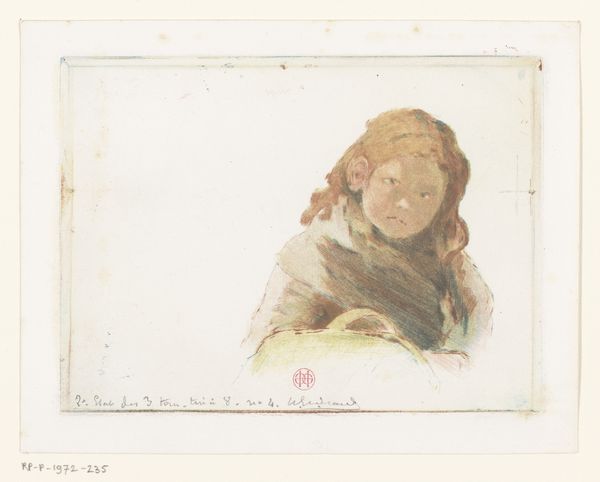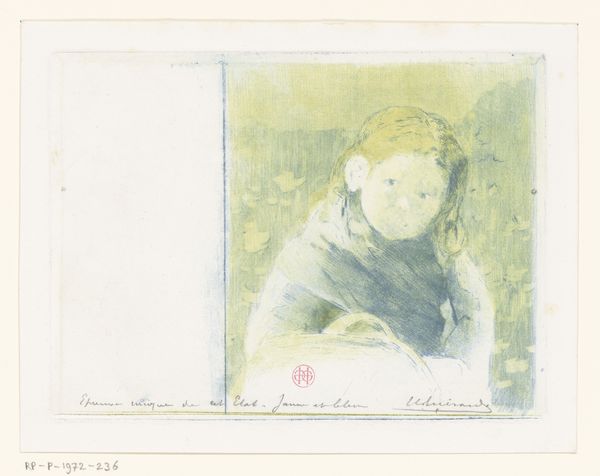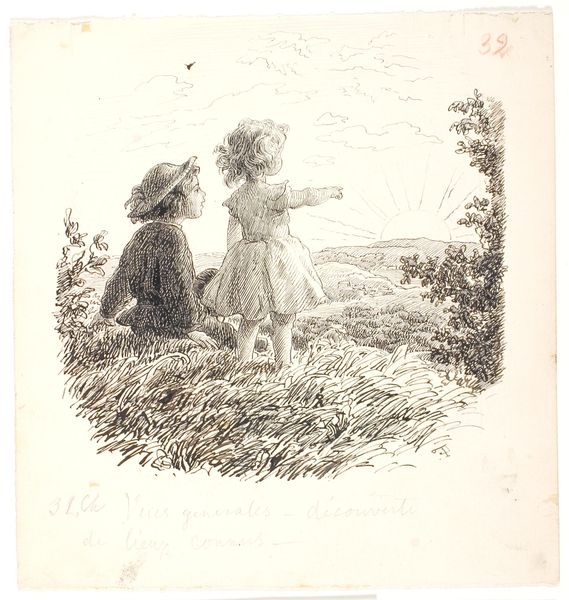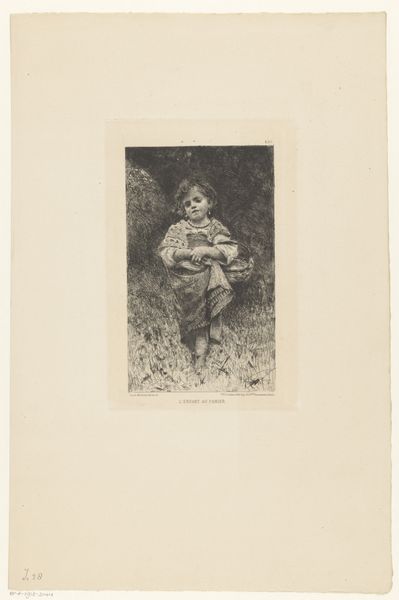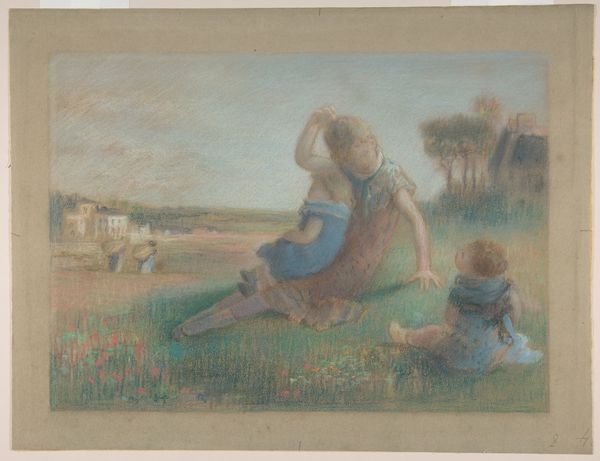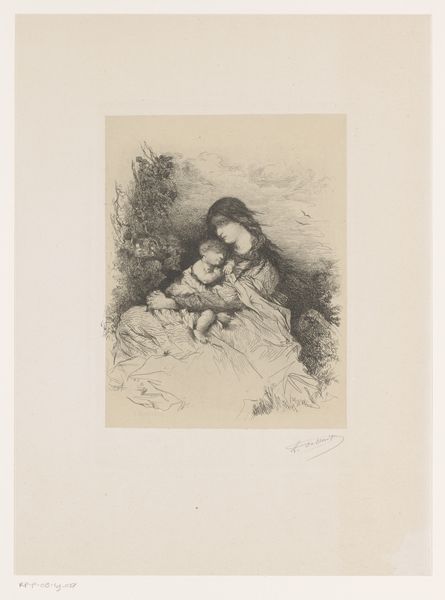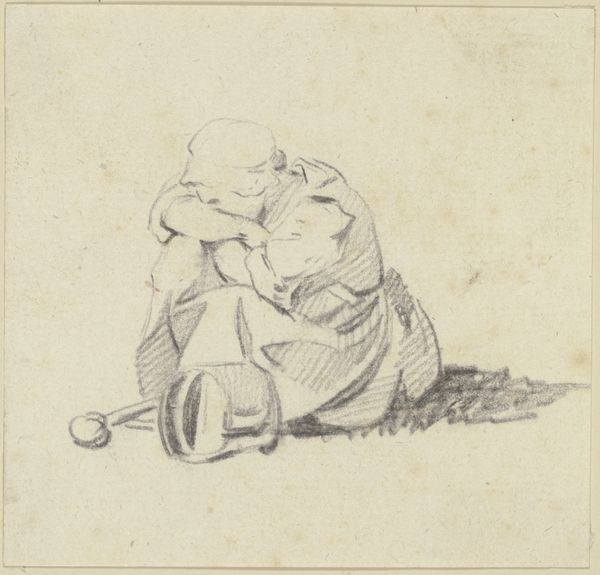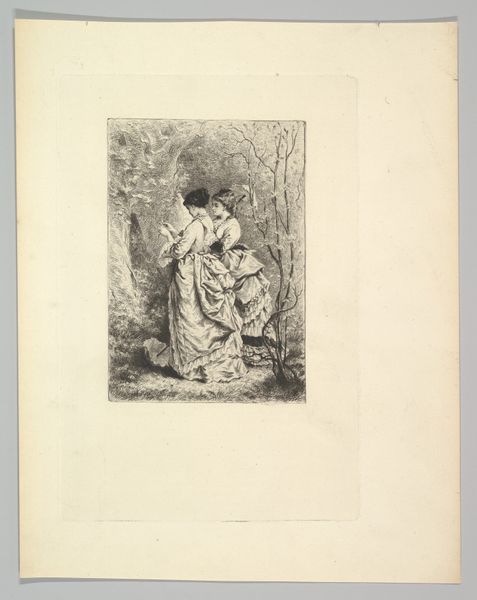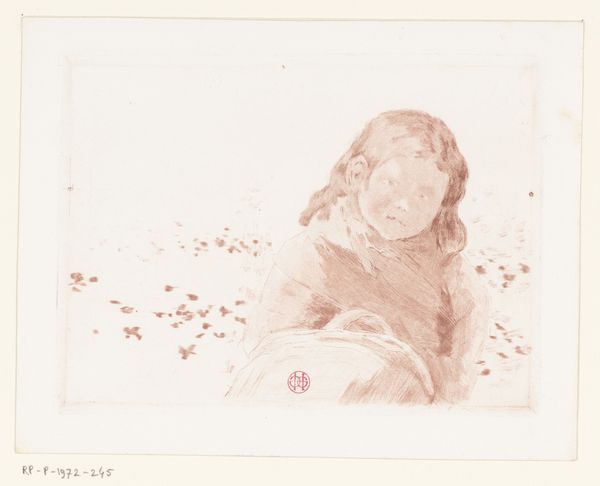
painting, watercolor
#
portrait
#
water colours
#
painting
#
impressionism
#
landscape
#
watercolor
#
watercolor
Dimensions: height 118 mm, width 158 mm
Copyright: Rijks Museum: Open Domain
Curator: Take a look at Henri-Charles Guérard's "Girl with Basket in a Flower Meadow," made sometime between 1856 and 1897. It's currently held in the Rijksmuseum collection. Editor: My first thought? It has this beautiful, almost melancholic innocence to it. The watercolor gives it a soft, dreamlike quality, like a memory fading at the edges. Curator: That resonates. Guérard was part of a circle around Manet and was deeply invested in printmaking's potential for capturing fleeting impressions. This work, though employing watercolor, still retains that sense of capturing a moment in time. Notice how the figure isn't idealized. Editor: Precisely! There’s a definite unvarnished quality. And that basket she's holding—almost looks more like a burden than a prop, which complicates the idyll of a child in a meadow. What about the political context, how was childhood and innocence represented at that time? Curator: During this era, depictions of children often served to reinforce societal ideals, but this one feels different, the girl appears contemplative, burdened almost, rather than just sweetly innocent. It deviates, reflecting perhaps the unease of its era with its rapidly changing social and political landscape. Also the landscape of flowers could act like a metaphor, life growing quickly. Editor: Right. And watercolours had been more the domain of amateurs; what does using that medium imply about Guérard's intent regarding institutional structures and challenges. What can it mean from an institution like Rijksmuseum of exposing it. Curator: Interesting angle. Using watercolor might signify a move away from traditional, academic styles towards a more personal, intimate expression, which later got co-opted by institutional styles of portraying "new" aesthetic standards and "authenticity". By exhibiting it, the Rijksmuseum acknowledges shifting perceptions. Editor: So, instead of merely seeing a portrait of a girl, we’re encountering a visual document loaded with societal and aesthetic questions. Thank you for shedding a light on this complex portrait! Curator: Exactly! It reminds us that images are rarely straightforward, carrying within them echoes of their time and reflections on the human condition, childhood, memory and cultural continuity.
Comments
No comments
Be the first to comment and join the conversation on the ultimate creative platform.
